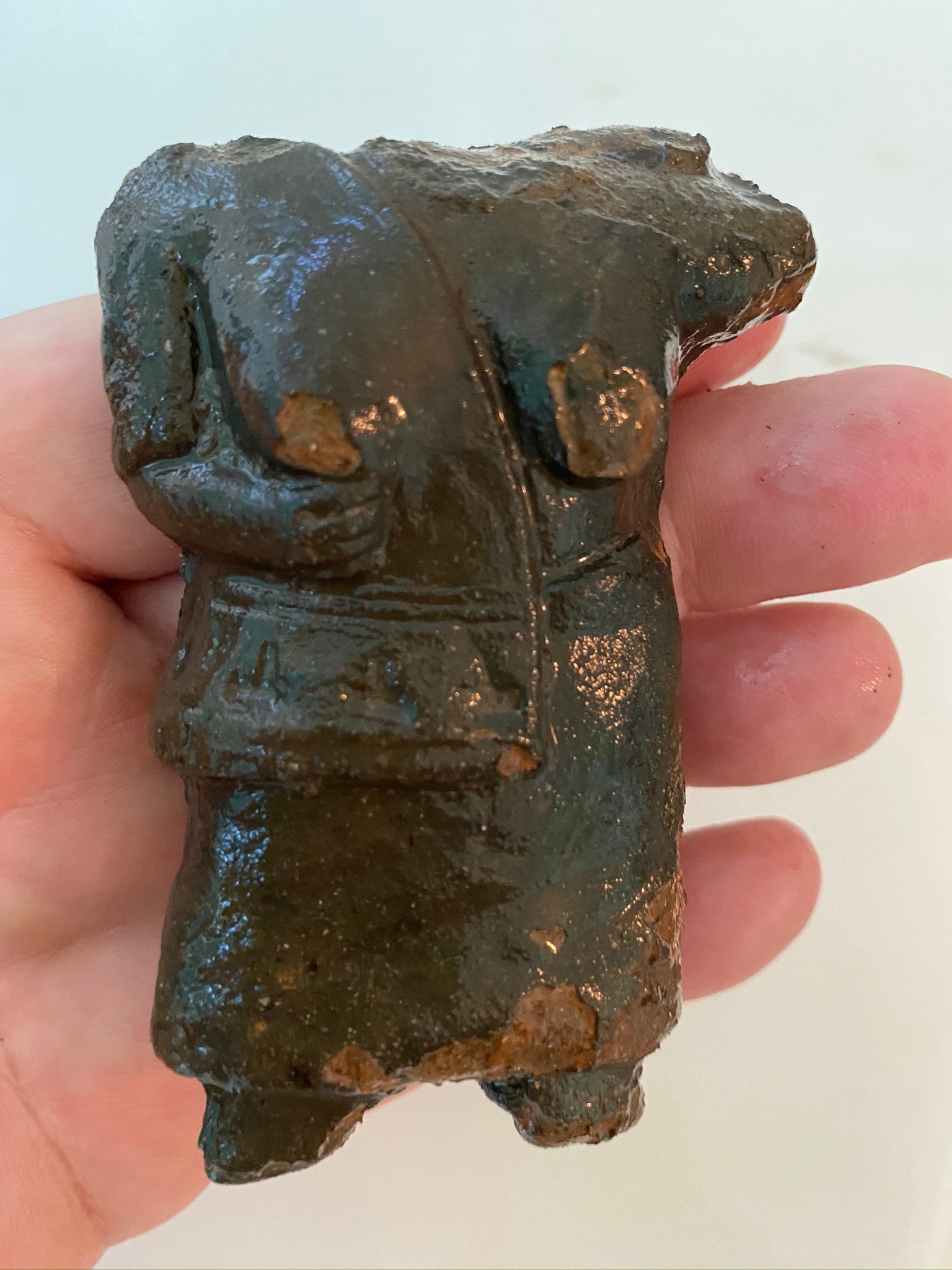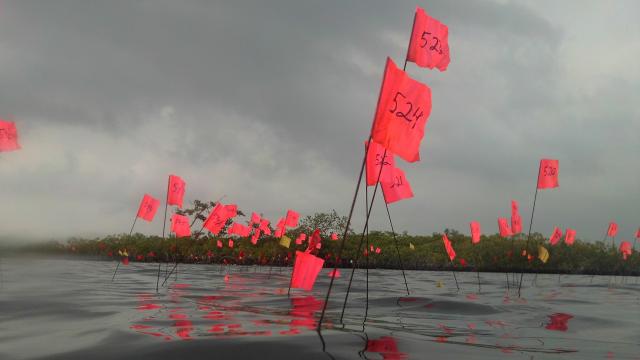Recent excavations of submerged Maya salt kitchens off the coast of Belize indicate that their ancient workers lived on the sites and possibly worked in kin-based teams.
The archaeological site is called Ta’ab Nuk Na, and it was in operation from 600 CE to 800 CE. It’s the largest of 110 submerged Maya sites in Paynes Creek, a nature reserve on Belize’s southern coast. Archaeological analysis of the operations at Ta’ab Nuk Na are published today in the journal Antiquity.
“The discovery of a residence at the site indicates the salt workers were living there instead of commuting daily from somewhere else on the coast or moving to the coast seasonally from inland areas,” said Heather McKillop, an archaeologist at Louisiana State University and the study’s lead author, in an email to Gizmodo.
The Maya mainly produced salt in two ways: evaporating saltwater and boiling brine in briquetage, or coarse ceramic vessels, over fire. The second method was deployed comprehensively at Ta’ab Nuk Na, according to the team’s analysis. Salt may have been used as a form of currency by the Maya and was important for preserving fish and other meats and as an ingredient in cooking.
The research team found evidence of a residential building and three salt kitchens associated with the structure in the shallow water off the coast. The site lies in a forest of red mangroves, salt-tolerant trees that thrive on the coastal shores of Central America.

The mangrove peat is anaerobic, meaning there’s very little oxygen. That has allowed the centuries-old wooden posts and crafts made by the Maya populations of Ta’ab Nuk Na to survive underwater for centuries.
Among the team’s recent finds were building posts, ceramic remains, notched wood, a ceramic spinning whorl, a possible fishing weight, a model boat, and a portion of an ocarina in the shape of a human.
Excavated artifacts were kept in bags of water to keep them from drying out and decaying. Though the excavations take place in shallow water, the team used flotation devices to avoid touching the seafloor and risk damaging the site. Objects of interest were marked with flags poking out of the water.
“The Late Classic Maya incorporated salt production as the focus of their economy and relied on trading with others to obtain many other daily goods,” McKillop said. “The Ta’ab’ Nuk Na salt makers returned with corn and other food as well as the minority of pottery we find that is not local.”
More salt was produced at Ta’ab Nuk Na than was needed for the workers there; the team believes the surplus was regionally traded, perhaps to communities farther inland.
Based on the production at modern salt works at Sacapulas in Guatemala, the team believes that 10 salt kitchens in the Paynes Creek area could have produced 60 tons of salt over the course of the four-month dry season in the area. However, it’s not certain how many of the Paynes Creek sites (110 in total) were simultaneously operated during the Late Classic period.
Soon, the team will excavate smaller sites near Ta’ab Nuk Na to better understand the scale of the salt production in the area. A pottery paddle found at one site suggested it may be where the briquetage pottery was made.
The site emphasises what was already known: Maya society was expansive and had complex trade routes connected different Maya communities across Mesoamerica. However, it also emphasises the scale of salt production in Belize and indicates that the tasty mineral may have been shipped in bulk along those trade routes.
